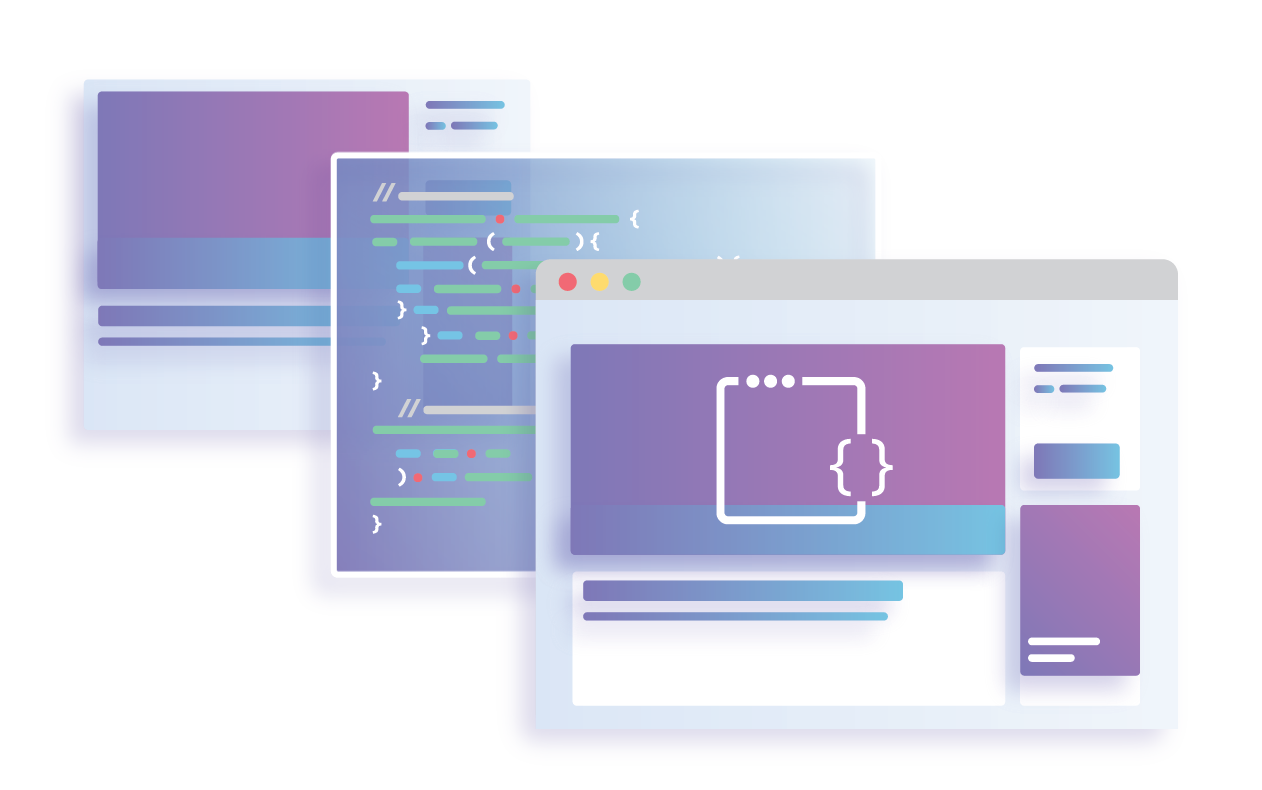LogicMonitor Steps Up Its Monitoring for Microservices, Containerized Applications
 The monitoring provider added Kubernetes and service-oriented monitoring tools to its SaaS-based platform.
The monitoring provider added Kubernetes and service-oriented monitoring tools to its SaaS-based platform.
Rubrik Scores $261M Series E, Tops $3B in Valuation
 Rubrik is considered a leader in the cloud data management space, which is also referred to by some as hyperconverged secondary storage. It competes against firms like Cohesity, Commvault, and Dell EMC.
Rubrik is considered a leader in the cloud data management space, which is also referred to by some as hyperconverged secondary storage. It competes against firms like Cohesity, Commvault, and Dell EMC.
Reaction: Open Source
As long-standing contributor to open standards, and someone trying to become more involved in the open source world (I really need to find an extra ten hours a day!), I am always thinking about these ecosystems, and how the relate to the network engineering world. This article on RedisDB, and in particular this quote, caught my attention—
The point of the article is a lot of companies that support open source projects, like RedisDB, are moving to a more closed source solutions to survive. The cloud providers are called out as a source of a lot of problems in this article, as they consume a lot of open source software, but do not really spend a lot of time or effort in supporting it. Open source, in this situation, becomes a sort of tragedy of the commons, where everyone things someone else is going to do the Continue reading
HPE, Datera Join Forces on Scale-Out, Software-Defined Storage
 The partnership gives HPE customers scale-out block and object storage. And it also moves Datera’s platform into more enterprise data centers.
The partnership gives HPE customers scale-out block and object storage. And it also moves Datera’s platform into more enterprise data centers.
A1 Unveils Gmünd as Austria’s ‘First’ 5G City
 A1 Telekom Austria is working with Nokia on the rollout of its 5G network and has now made its first 5G data connection on a live network.
A1 Telekom Austria is working with Nokia on the rollout of its 5G network and has now made its first 5G data connection on a live network.
Research Brief: Successful Hardware Strategies for a Software-dominated World
 Download a copy of this research brief aimed at providing NEPs and SIs with a practical guide on how to add value to customers with innovative hardware strategies in a software-centric world, and how differentiation can be achieved in the face of commoditization.
Download a copy of this research brief aimed at providing NEPs and SIs with a practical guide on how to add value to customers with innovative hardware strategies in a software-centric world, and how differentiation can be achieved in the face of commoditization.
Related Stories
DriveScale Says Composable Is the Answer to Data-Intensive Compute
 DriveScale’s founders wanted to solve the problem of infrastructure over-provisioning. The technology wasn’t called composable infrastructure back then.
DriveScale’s founders wanted to solve the problem of infrastructure over-provisioning. The technology wasn’t called composable infrastructure back then.
iPhone 11 Plus Wi-Fi 6 Equals Undefined?

I read a curious story this weekend based on a supposed leak about the next iPhone, currently dubbed the iPhone 111. There’s a report that the next iPhone will have support for the forthcoming 802.11ax standard. The article refers to 802.11ax as Wi-Fi 6, which is a catch branding exercise that absolutely no one in the tech community is going to adhere to.
In case you aren’t familiar with 802.11ax, it’s essentially an upgrade of the existing wireless protocols to support better client performance and management across both 2.4GHz and 5GHz. Unlike 802.11ac, which was rebranded to be called Wi-Fi 5 or 802.11n, which curiously wasn’t rebranded as Wi-Fi 4, 802.11ax works in both bands. There’s a lot of great things on the drawing board for 11ax coming soon.
Why did I say soon? Because, as of this writing, 11ax isn’t a ratified standard. According to this FAQ from Aerohive, the standard isn’t set to be voted on for final ratification until Q3 of 2019. And if anyone wants to see the standard pushed along faster it would be Aerohive. They were one of, if not the, first Continue reading
Update on Latin America and Caribbean Workshop for Chapter Leaders

In July 2018, the Internet Society’s Latin America and Caribbean Bureau held another edition of the Workshop for Chapter Leaders. Besides discussing the challenges and opportunities of participation in their respective chapters, the 34 attendees began the implementation of several projects related to our 4 key issues of 2018. Starting 2019, I am glad to share with you the main results of these projects.
Participation showed a strong preference for Internet access issues. As a result, 10 of the 23 projects implemented were focused on Community Networks. Following our vocation in favor of the multistakeholder approach and the participation of the community, 8 of the projects took Internet Governance as a central theme. The remaining 5 projects focused on trust and security by focusing on Internet of Things (IoT) and Internet routing security through MANRS.
The results are inspiring, since they reflect the diversity of the Latin American and Caribbean region. In Community Networks, projects include a broad spectrum of related topics, ranging from the deployment and implementation of networks to the analysis and mapping of regulatory conditions to ensure such deployment. In addition, some of the projects focused on capacity building through webinars.
In terms of Internet Governance, awareness Continue reading
NetFlow Generators explained
The post NetFlow Generators explained appeared first on Noction.
How Serverless Platforms are Changing to Enable New Applications (video)

Serverless technology is still in its infancy, and some people are unsure about where it’s headed. Join Zack Bloom, Director of Product for Product Strategy at Cloudflare, on a journey to explore the serverless future where developers “just write code,” pay for exactly what they use, and completely forget about where code runs; then see why current platforms won't be able to get developers all the way there.
The talk below was originally presented and recorded at Serverless Computing London in November 2018. If you’d like to join us in person to talk about serverless, we’ll be announcing 2019 event locations throughout the year on the docs page.
About the talk
Many of the technical challenges of serverless (cold-start time, memory overhead, and CPU context switching) are solved by a new architecture which translates technology developed for web browsers onto the server. Learn about how serverless platforms built using isolates are helping to expand the kinds of applications built using serverless.
About the speaker
Zack Bloom helps build the future of the Internet as the Director of Product for Product Strategy at Cloudflare. He was a co-founder of Eager, an Continue reading
Could Blockchain be the Key to Securing IoT?
IoT devices represent one of the largest threat surfaces we’ve ever seen, and manufacturers as-yet have no clue how to secure them. The solution may stem from an unlikely source: blockchain.
BGP as High Availability Protocol
Every now and then someone tells me I should write more about the basic networking concepts like I did years ago when I started blogging. I’m probably too old (and too grumpy) for that, but fortunately I’m no longer on my own.
Over the years ipSpace.net slowly grew into a small community of networking experts, and we got to a point where you’ll see regular blog posts from other community members, starting with Using BGP as High-Availability protocol written by Nicola Modena, member of ExpertExpress team.
Nokia Nuage SD-WAN Supports Moneyball-Like Analytics App for Soccer
 SD-WAN is supporting a service that rates soccer players based an analytics that are derived from live video feeds around a stadium.
SD-WAN is supporting a service that rates soccer players based an analytics that are derived from live video feeds around a stadium.
BGP in 2018 – Part1: The BGP Table
It has become either a tradition, or a habit, each January for me to report on the experience with the inter-domain routing system over the past year, looking in some detail at some metrics from the routing system that can show the essential shape and behaviour of the underlying interconnection fabric of the Internet.BiB 068: Aporeto’s Identity Based Workload Segmentation
Aporeto is an identity-based security solution. Not only user identity, but also workload identity. That is, when using Aporeto, workloads can only talk to each other when their identity is authenticated by fingerprint and authorized by policy. Aporeto decouples the network infrastructure from security, adding a whole new dimension to microsegmentation strategies.
The post BiB 068: Aporeto’s Identity Based Workload Segmentation appeared first on Packet Pushers.